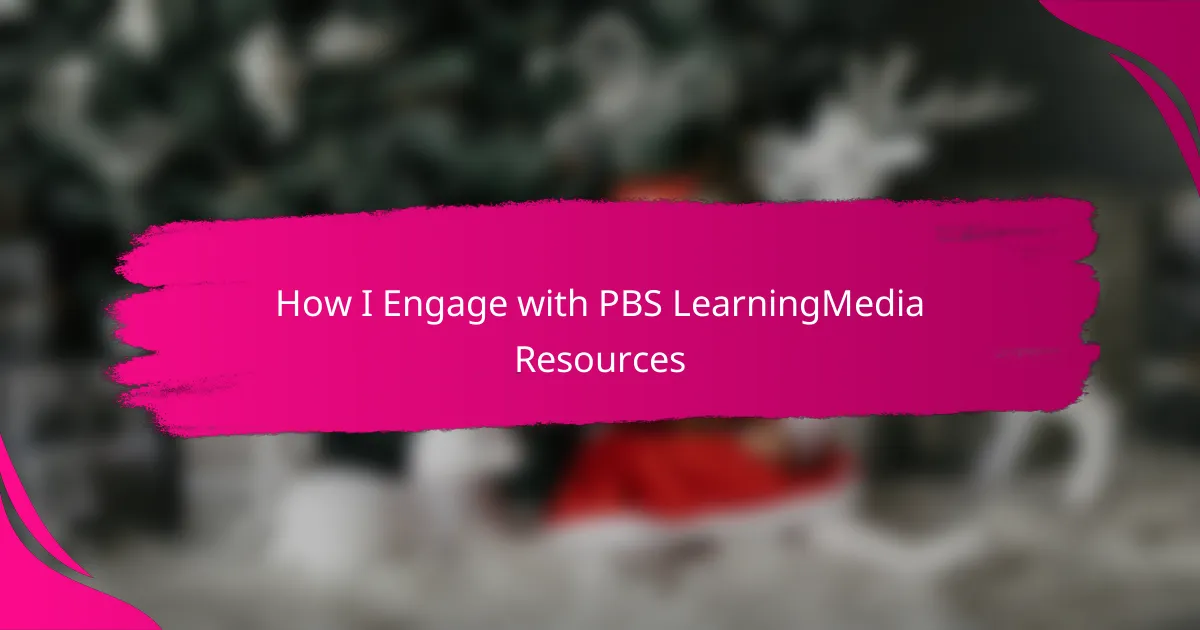Key takeaways
- PBS LearningMedia offers diverse, educational resources aligned with school standards, making it easy for parents to support their children’s learning.
- The platform saves time by providing high-quality content, fostering parent-child engagement through shared learning experiences.
- Accessing resources is straightforward with an easy sign-up process, and materials are clearly labeled for age appropriateness, ensuring effective learning.
- Integrating PBS LearningMedia into daily routines promotes curiosity, encourages questions, and transforms learning into enjoyable adventures.
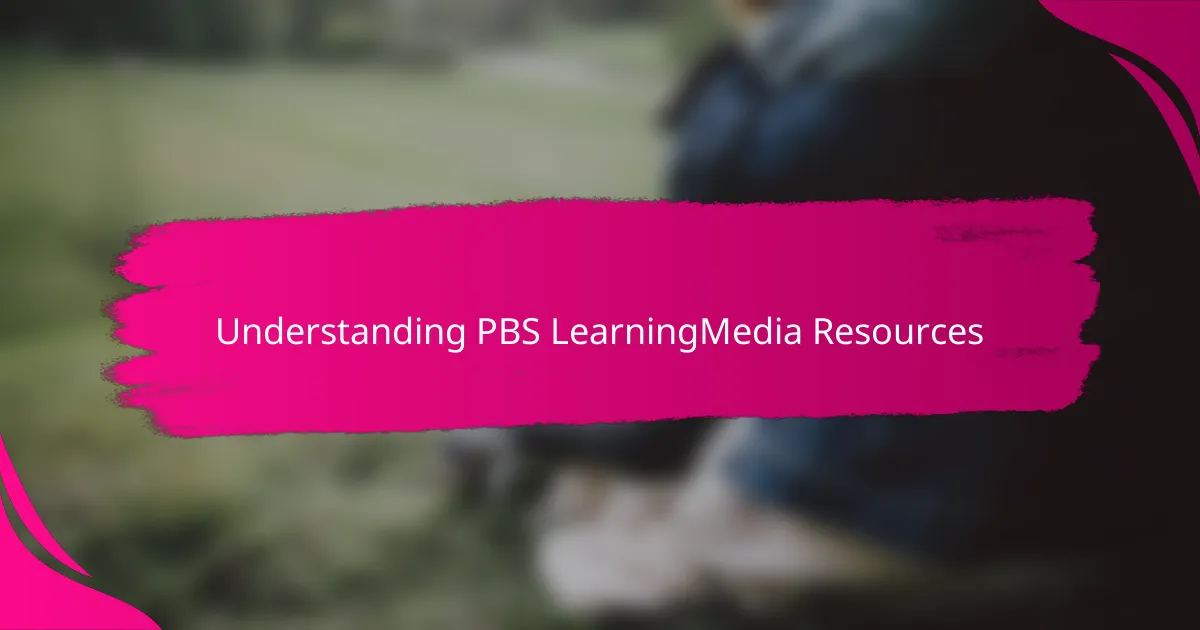
Understanding PBS LearningMedia Resources
PBS LearningMedia offers a treasure trove of educational materials that feel thoughtfully designed for kids and parents alike. When I first explored their resources, I was impressed by how diverse and accessible the content is—from videos and interactive activities to lesson plans that really bring learning to life. It made me wonder, why is it so hard to find quality, trustworthy educational content sometimes?
What I find most valuable is how each resource is aligned with educational standards, so I don’t have to second-guess if it’s appropriate or effective. Using these materials as a parent gave me peace of mind, knowing I was supporting my child’s learning in a way that teachers themselves would approve of. Have you ever felt overwhelmed trying to pick the right learning tools? This platform helped me cut through that noise effortlessly.
Understanding PBS LearningMedia means recognizing it’s not just a repository of random videos but a carefully curated library meant to spark curiosity and deepen knowledge. Its user-friendly design invites exploration, making it easy for me to integrate learning moments naturally into everyday life. Isn’t that what every parent wants—to nurture learning without turning the home into a classroom?
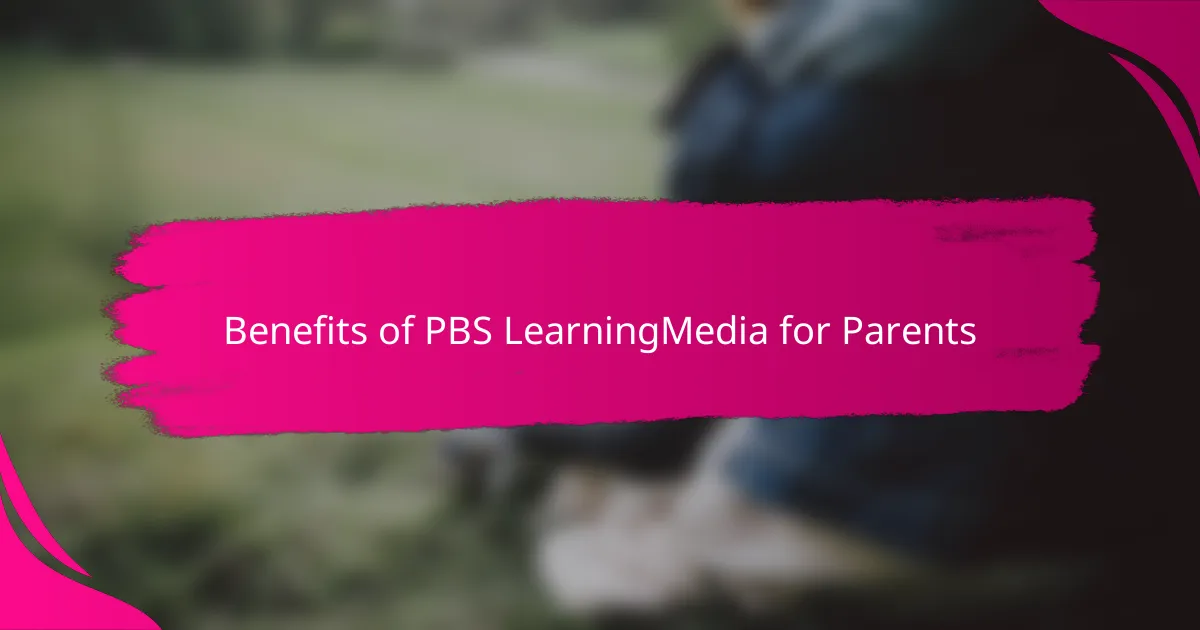
Benefits of PBS LearningMedia for Parents
One of the biggest benefits I’ve found with PBS LearningMedia is how it saves me time. Instead of scrolling endlessly through internet content, I trust that the materials here are already vetted and high quality. It’s a relief to know I’m not wasting moments sifting through distractions when I just want meaningful activities for my child.
I also appreciate how these resources help me feel more connected to my child’s education. Using videos and interactive lessons together sparks conversations and curiosity that might not happen otherwise. Have you noticed how learning becomes more fun when it’s a shared experience? That’s something PBS LearningMedia naturally encourages.
Finally, the platform’s alignment with educational standards gave me a sense of confidence. It’s reassuring to know the activities support what teachers are doing in the classroom. When I see my child excited to learn and growing without pressure, I feel like I’m truly making a positive impact on their development. Isn’t that the goal for all parents?
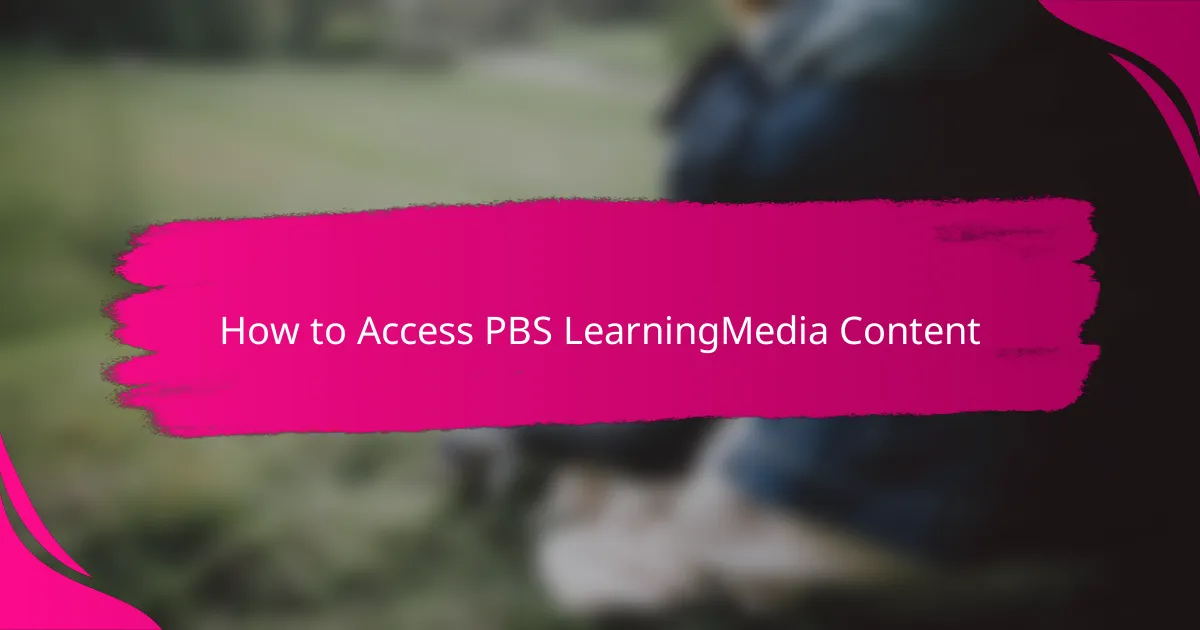
How to Access PBS LearningMedia Content
Accessing PBS LearningMedia content is surprisingly simple, and I remember feeling immediately at ease when I first signed up. All you need to do is create a free account, which opens the door to thousands of videos, lesson plans, and interactive tools tailored to different grade levels. Have you ever tried navigating a new site and felt lost? With PBS LearningMedia, that never happened to me—it’s intuitive right from the start.
Once logged in, I found that searching for specific topics or grade-appropriate materials was straightforward, thanks to the easy-to-use filters. Whether I was looking for science experiments or reading comprehension activities, just a few clicks brought me exactly what I needed. This made me think, why should accessing quality educational content be a hassle when it can be this smooth?
If you prefer not to create an account, some PBS LearningMedia resources are still available to explore without signing in, but having an account lets you save favorites and create customized collections. This feature became a game-changer for me—it kept everything organized and ready when my child was ready to dive into learning. Isn’t that kind of convenience exactly what busy parents need?
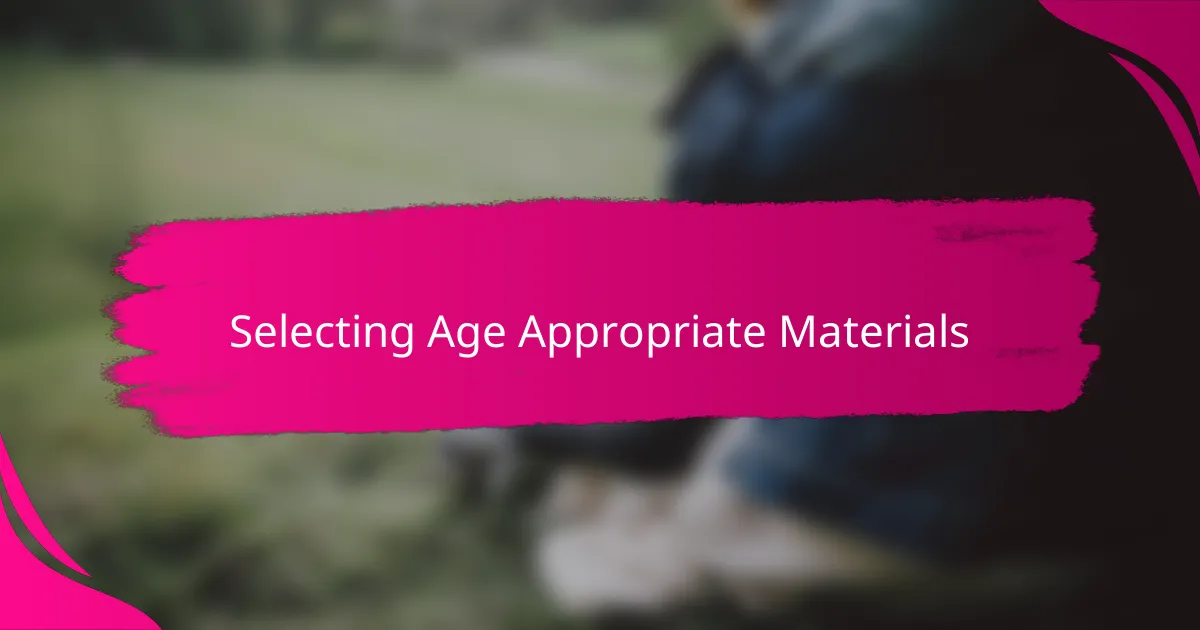
Selecting Age Appropriate Materials
Choosing materials that match my child’s age has always been crucial in keeping learning both fun and effective. When I first started exploring PBS LearningMedia, I appreciated how clearly each resource was labeled by grade or age group—it helped me avoid the frustration of guessing whether something would be too advanced or too simple. Have you ever felt uncertain if a video or activity was actually suitable for your child’s developmental stage?
Sometimes, even with good labels, I found it necessary to preview content before sharing it. This small step made a big difference; I could ensure the themes and language resonated well with my child’s interests and understanding. It’s amazing how selecting the right level can boost their confidence and curiosity, rather than overwhelm or bore them.
What’s great is how PBS LearningMedia offers a range of options within each age bracket, letting me tailor learning to my child’s unique pace. Whether they’re ready for basic concepts or eager for deeper exploration, I’ve found resources that adapt perfectly. Doesn’t having that kind of flexibility make engaging with learning more rewarding for both of us?
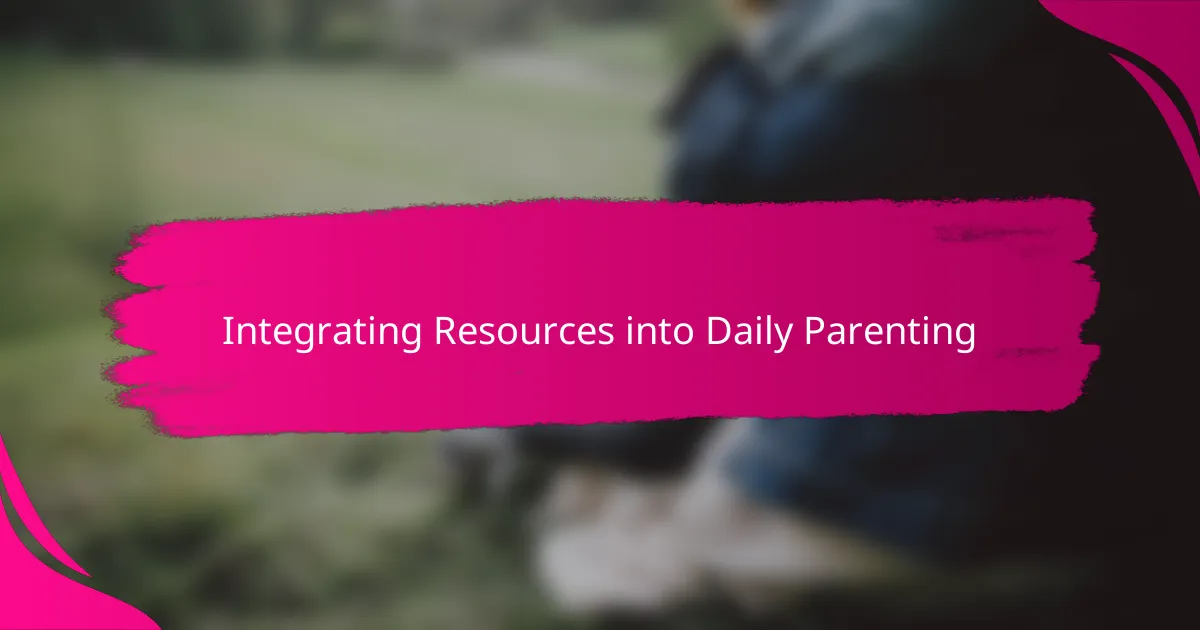
Integrating Resources into Daily Parenting
Integrating PBS LearningMedia resources into our daily routine didn’t happen overnight, but once I started weaving short, engaging videos or simple science experiments into snack time or weekend activities, it felt natural and fun. Have you ever tried turning everyday moments into mini learning adventures? For me, those little sparks of curiosity during a car ride or while cooking brought learning out of textbooks and into real life.
I also noticed that by relying on PBS LearningMedia, I could easily balance structure and spontaneity. Some days, we’d plan a focused activity from the platform, and other days, I’d pull up a quick interactive game when my child needed a screen break. This flexibility helped reduce pressure on both of us—it wasn’t about forcing lessons but creating opportunities to explore ideas together whenever the moment felt right.
What surprised me most was how these resources naturally encouraged questions and conversations throughout the day. After watching a video on plants, we’d suddenly find ourselves talking about the backyard garden or picking out fruits at the store. Isn’t it amazing how a well-timed resource can open doors to curiosity that lasts beyond the screen? That’s the kind of learning I want to keep alive every single day.
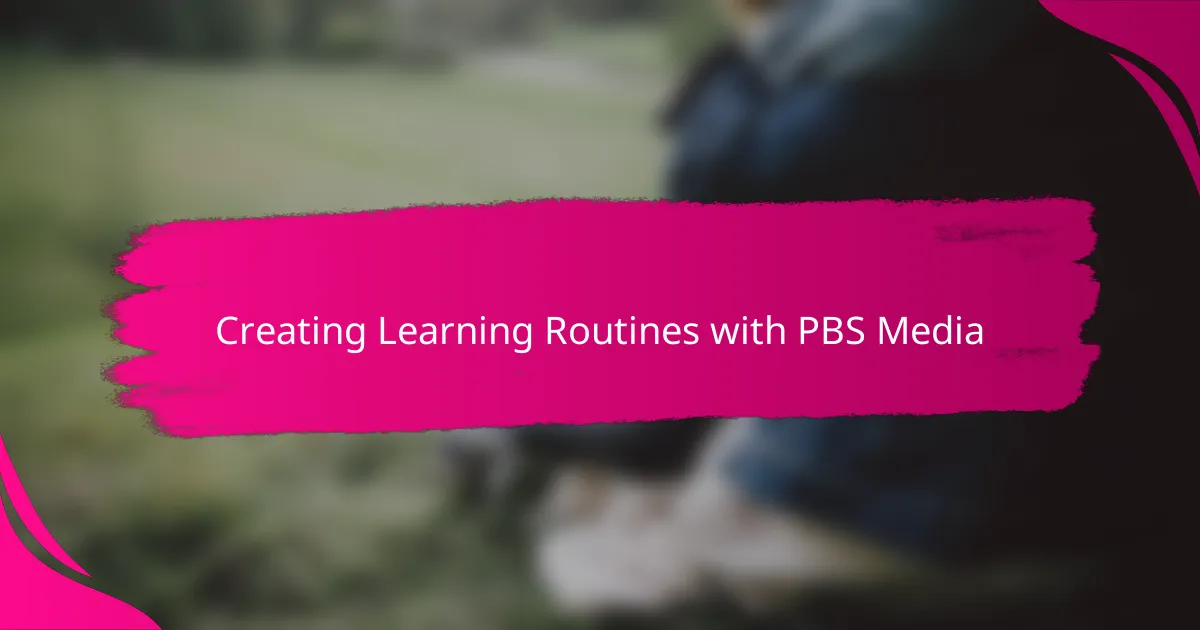
Creating Learning Routines with PBS Media
Creating learning routines with PBS LearningMedia quickly became a lifesaver in our busy household. I started dedicating consistent times—like after breakfast or just before bedtime—to explore a short video or activity together. Have you ever noticed how a simple routine can transform resistance into enthusiasm? For us, those moments turned from “another thing to do” into little highlights of our day.
What I appreciate most is how manageable and flexible these routines are. Some days, we follow a structured lesson plan, and other times, my child picks a favorite interactive game for a quick brain boost. This balance keeps things fresh and prevents learning from feeling like a chore. How often do you find that spontaneity actually enhances engagement more than strict schedules?
It’s also been eye-opening to see how these regular learning habits build curiosity naturally. When a routine includes a video on space or a science experiment, questions start flowing beyond screen time—suddenly we’re stargazing or experimenting with kitchen ingredients. Doesn’t it feel rewarding when curiosity sparks just by keeping things consistent? That’s the magic of creating these learning rhythms with PBS LearningMedia.
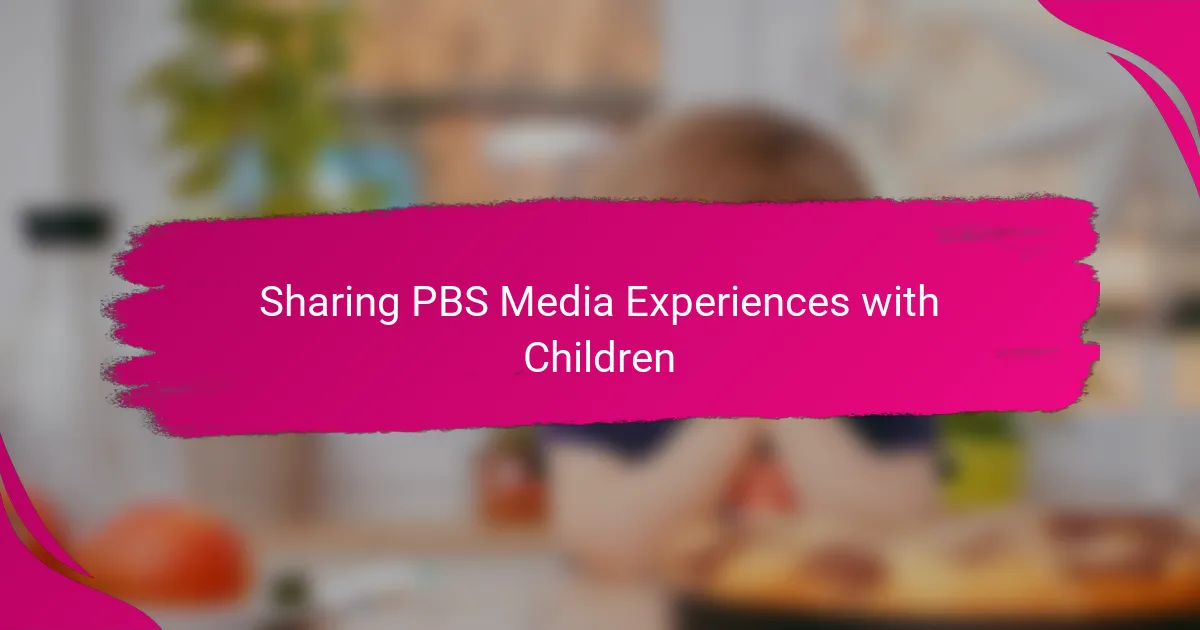
Sharing PBS Media Experiences with Children
Sharing PBS media experiences with my child has been a wonderfully bonding journey. I remember one afternoon when we watched a short video about ocean creatures together—her eyes lit up with excitement, and suddenly questions poured out about dolphins, tides, and even pollution. Isn’t it incredible how a simple video can turn into an engaging conversation that lasts far beyond the screen?
Sometimes, I like to pause a video and ask my child what she thinks will happen next or how she might solve a problem presented in the story. This back-and-forth feels less like a lesson and more like a shared adventure. Have you ever noticed how children open up when you invite their ideas and thoughts during media time? That’s a moment of true connection I cherish.
I also found that sharing these experiences builds not only knowledge but also confidence. When my child recognizes characters or concepts from a PBS video at school or with friends, I see genuine pride in her face. It makes me think, isn’t that what every parent hopes for—that their child feels empowered and excited to learn?
